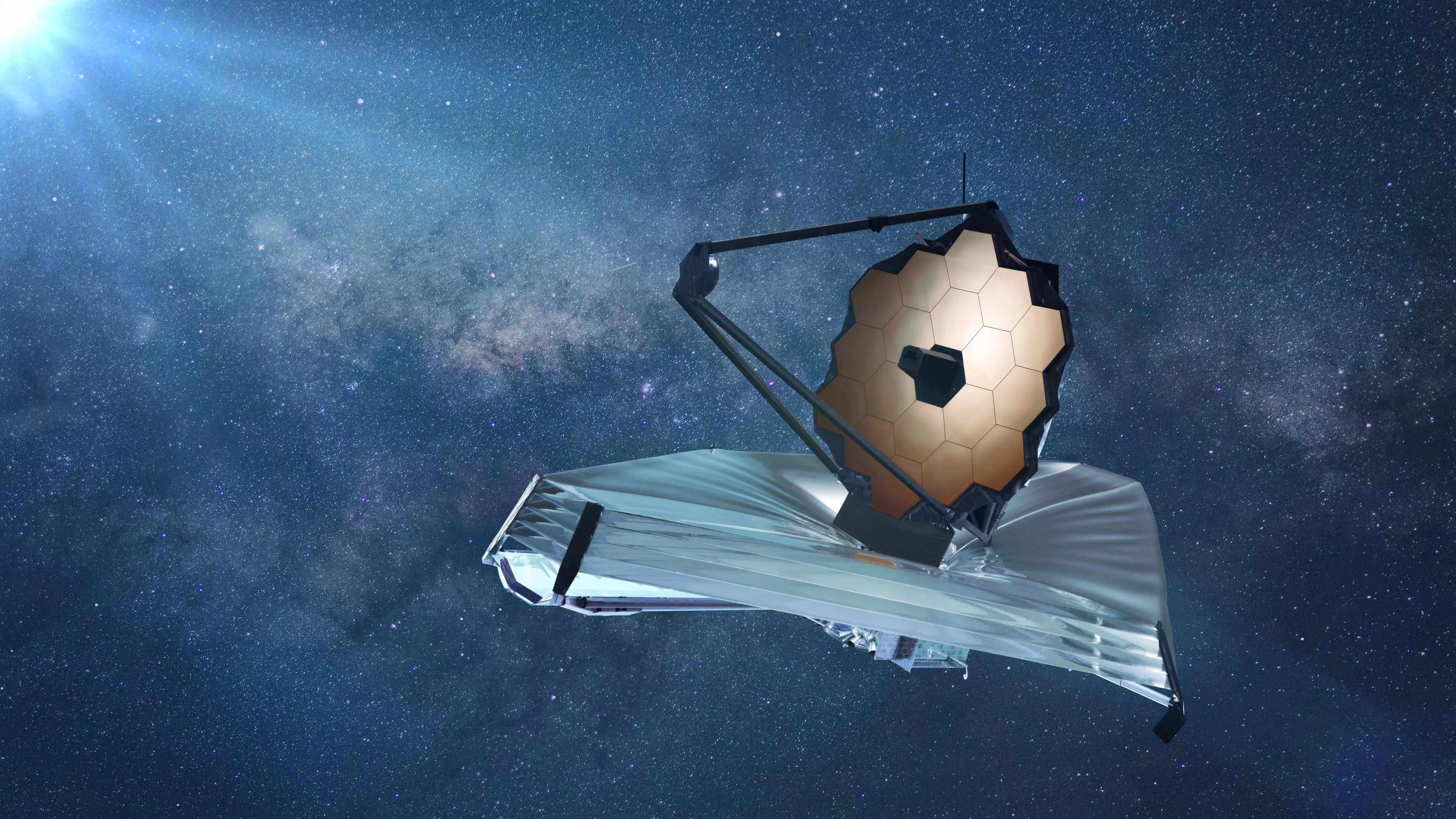
The sun shield designed to protect the James Webb Space Telescope has been fully deployed.
It's been described as 'one of the most challenging' steps in the machine's setup and it has gone off without a hitch. There were 344 single-point parts that had to be remotely moved into place and they've all done their job perfectly.
The kite-shaped, five-membrane sun shield, which is roughly the size of a tennis court, will protect the telescope from the heat and light from the Sun, Earth and Moon.
The camera is pointed in the opposite direction of our Sun to allow it to peer into the darkest and deepest corners of the universe.
Greg Robinson, Webb's program director at NASA Headquarters said in a statement: "Unfolding Webb's sun shield in space is an incredible milestone, crucial to the success of the mission.
"Thousands of parts had to work with precision for this marvel of engineering to fully unfurl.
"The team has accomplished an audacious feat with the complexity of this deployment - one of the boldest undertakings yet for Webb."
The unfurling of the humungous sun shield is an awesome achievement because there were questions about whether it would fully work.
Testing on the deployment mechanism was obviously done on Earth and this is the first time it was completed in space's zero gravity, according to Yahoo News.
The next big mission for the James Webb Space Telescope is deploying the highly sensitive mirrors.
The telescope was launched on a European Ariane 5 rocket from the Kourou, French Guiana site in South America on Christmas Day (25 December) last year.
It will work alongside the Hubble Space Telescope in our cosmos but will sit much further out into space than its more than 30-year-old predecessor.
This new space telescope, which cost a whopping $10 billion to create, is hell of a lot bigger than the Hubble.
It features a 6.5 metre mirror, more than double the size of Hubble's 2.4m one. The upsized mirror will mean it's between 10 and 100 times more sensitive than the Hubble.
The James Webb Space Telescope, will attempt to look back 13.7 billion years back in time, 100 million years after the Big Bang and will give researchers a chance to look at how the universe was formed.
The telescope, which will be managed by Baltimore's The Space Telescope Science Institute, will give around five to ten years of observations.
After a few weeks of testing it's expected we'll get our first rendered images of what the James Webb Telescope can see, which will no doubt be a massive moment in the machine's history.
Featured Image Credit: AlamyTopics: News, James Webb Space Telescope, Technology, space